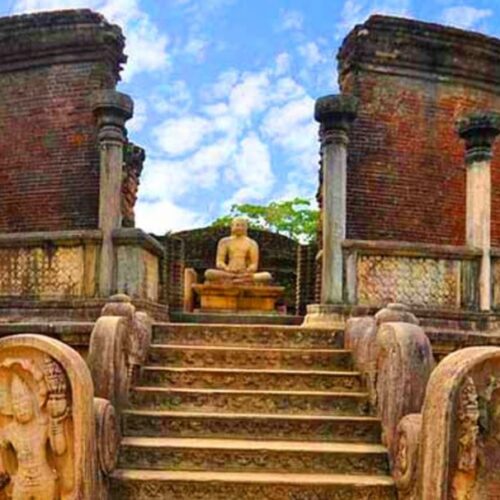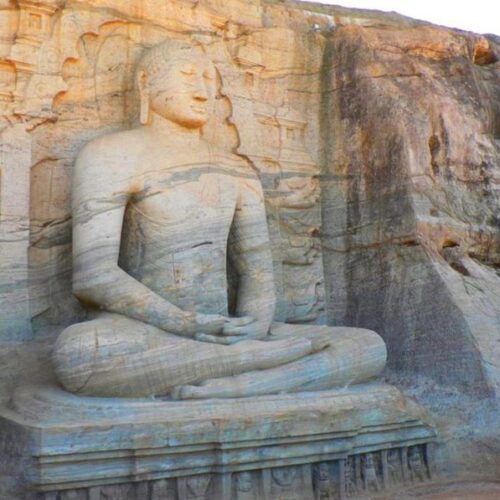POLONNARUWA
POLONNARUWA
The ancient city of Polonnaruwa was the second capital of Sri Lanka. Today, it is one of the best places to visit in Sri Lanka. Polonnaruwa is a UNESCO world heritage site. It is a huge archaeological site (122 hectares) with perhaps Sri Lanka’s most impressive artifacts and ruins.
The site houses the ruins of Sri Lanka’s largest Buddhist University called “Alahana Pirivena”. The city is an important stop for Sri Lankan Buddhist pilgrims because of many Buddhist monuments and ruins attested to various historical incidents. In the past, the city gained influence under South Indian rulers who were ousted by the Sinhalese rebels during the eleventh century CE. The ruins of Polonnaruwa are popular for their blend of Anuradhapura and South Indian architecture. This is because the ancient inhabitants of Polonnaruwa were a mix of Buddhist and Hindu elite. In the face of growing South Indian power, the kingdom of Polonnaruwa was short-lived and abandoned around 1300 CE. The ruins of Polonnaruwa were mostly unknown until colonial explorations started in the Northern wildernesses of the island. The city has inspired many people through its liberal approach to Buddhist art and Hindu sensuality. It is a place where Buddhist monuments and Hindu shrines stand side by side. The kings of Polonnaruwa extended the Anuradhapuran irrigation system to this kingdom as well. The main site lies on the bank of a large ancient reservoir. The Kingdom of Polonnaruwa is the earliest form of contemporary Sinhalese culture.



